RAM Benchmark Hierarchy 2025: DDR5, DDR4 for AMD, Intel CPUs
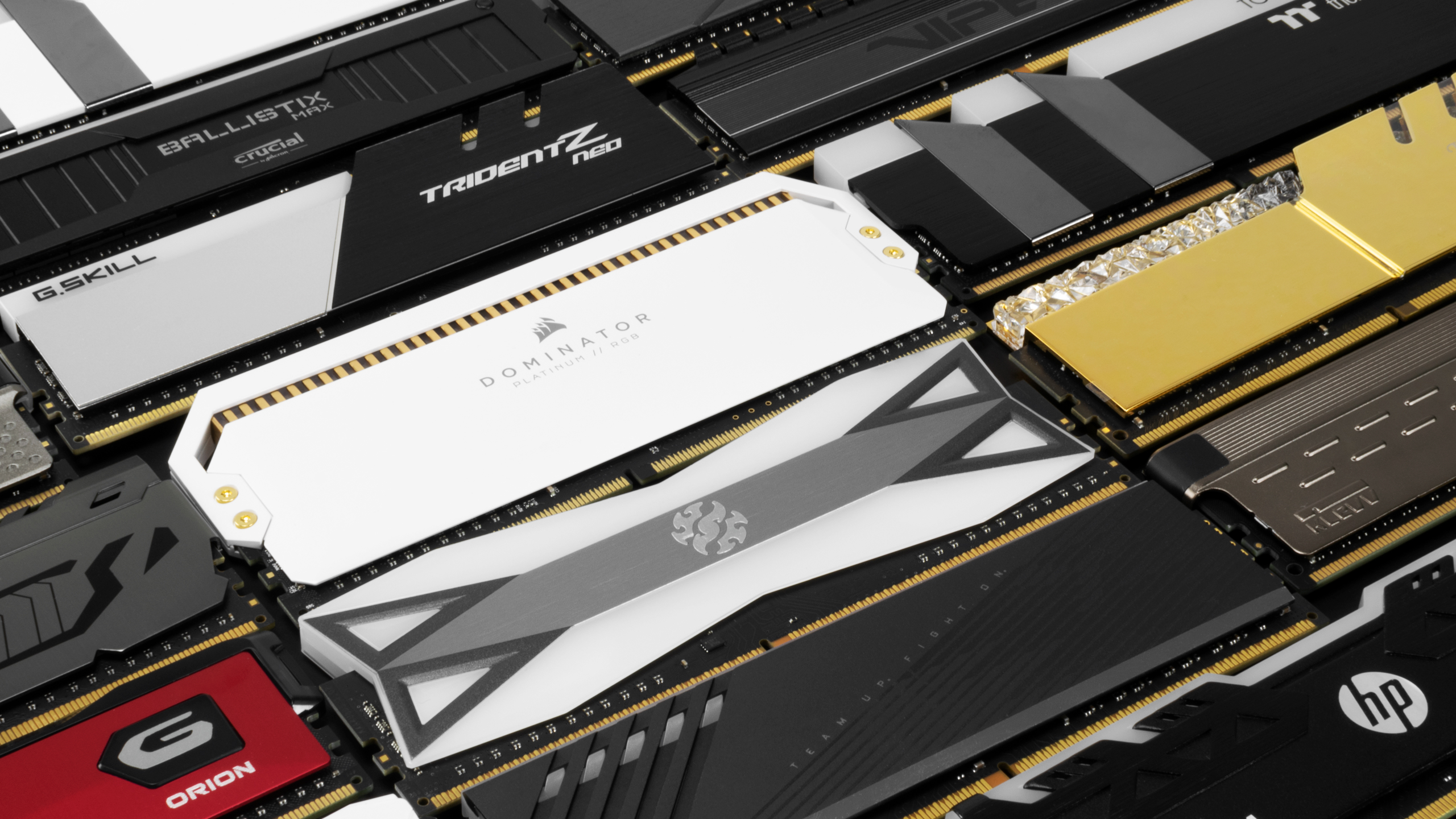
Our RAM benchmark hierarchy helps you find the fastest DDR5 and DDR4 memory kits for your system. People frequently underestimate RAM (Random Access Memory), yet it is among the most vital hardware components. Choosing the appropriate or inappropriate memory kit can significantly influence your system's performance in gaming, productivity, and, if insufficient, overall sluggishness. Remember, consult our Best RAM list for the best memory deals.
Companies often introduce new memory kits with different speeds, timings, capacities, and ranks, making it tedious to compare numerous models. Our RAM benchmark hierarchy aims to provide a simple database that categorizes the best memory kits we've evaluated based on their raw performance.
To maintain objectivity in our rankings, we utilize the geometric mean of our memory benchmarking results, which helps eliminate subjective factors such as aesthetics and overclocking potential. Detailed insights are available in individual RAM reviews. We believe many of you prioritize performance above all else. However, the geometric means alone may not provide a complete picture: we suggest consulting the full review of the memory kit you’re considering for optimal performance in particular workloads or gaming scenarios.
The score results are based on the geometric mean of our RAM benchmark suite, which includes both scripted and real-world tests. This suite features applications such as Adobe Photoshop, Adobe Premiere, and Adobe Lightroom, along with benchmarks like Cinebench 2024, Corona 12, Blender 4.0, V-Ray 6, 7-Zip for compression and decompression, HandBrake for x264 and x265 conversion, LuxMark v4, Windows AI inference, and Y-Cruncher.
For simplicity, we have organized the memory kits into distinct categories based on their densities. Next, we ranked the memory kits for each capacity from best to worst for both Intel and AMD systems. The score in our hierarchy may differ slightly from the geometric mean presented in the individual review. This variation occurs as we strive to provide results based on the most recent and relevant Intel and AMD platforms. We retest each memory kit to guarantee that the metrics in the table are as up-to-date as possible. We conduct retests whenever there are significant updates to either of our testing systems, including new processors, motherboards, graphics cards, or firmware revisions.
Memory pricing is highly volatile. We have refrained from providing a price-to-performance value because it only reflects pricing at a single static moment, and memory pricing varies significantly. Nonetheless, we strive to provide the most current pricing in each table below; however, the performance measurements do not take into account the price.
If you're stuck between two specific kits, you can easily compare your options by dividing the real-time pricing by the geometric mean. Ideally, you'll want to aim for the lowest value, as a smaller figure indicates better value for your money.
Update 10/21: The results are valid when comparing memory kits within the same category. Please avoid comparing memory kits of different capacities, as we're still updating the results for the latest Z890 and X870 platforms.
Best DDR5 RAM For Intel CPUs
Best 32GB (2x16GB) DDR5 Memory Kits for Intel CPUs
Why you can trust Tom's Hardware
Memory Kit | Score | Data Rate | Primary Timings | Voltage (V) | Part Number | Buying Link |
|---|---|---|---|---|---|---|
Corsair Dominator Platinum RGB | 5687.02 | DDR5-6400 (XMP) | 38-40-40-84 | 1.35 | CMT32GX5M2X6400C38 | |
Crucial Pro Overclocking | 5681.35 | DDR5-6400 (XMP & EXPO) | 32-40-40-103 (2T) | 1.35 | CP2K16G64C32U5B | |
G.Skill Trident Z5 RGB | 5677.81 | DDR5-6400 (XMP) | 32-39-39-102 | 1.40 | F5-6400J3239G16GX2-TZ5RK | |
Crucial Pro Overclocking | 5661.67 | DDR5-6400 (XMP & EXPO) | 38-40-40-84 | 1.35 | CP2K16G64C38U5B | |
Klevv Cras V RGB | 5633.20 | DDR5-6400 (XMP) | 32-38-38-78 | 1.35 | KD5AGUA80-64A320G | |
Crucial CUDIMM | 5464.06 | DDR5-6400 | 52-52-52-103 | 1.10 | CT2K16G64C52CU5 |
Best 48GB (2x24GB) DDR5 Memory Kits for Intel CPUs
Memory Kit | Score | Data Rate | Timings | Voltage (V) | Part Number | Buying Link |
|---|---|---|---|---|---|---|
G.Skill Trident Z5 RGB | 5684.92 | DDR5-7200 | 36-46-46-115 | 1.35 | F5-7200J3646F24GX2-TZ5RK | |
TeamGroup T-Force Xtreem | 5659.41 | DDR5-7200 | 34-42-42-84 | 1.40 | FFPD548G7200HC34ADC01 | |
G.Skill Trident Z5 CK | 5655.83 | DDR5-8800 | 42-55-55-140 | 1.45 | F5-8800C4255H24GX2-TZ5CK | |
Corsair Vengeance RGB CUDIMM | 5643.70 | DDR5-8400 | 40-52-52-135 | 1.40 | CMHC48GX5M2X8400C40 | |
Corsair Dominator Titanium First Edition | 5620.76 | DDR5-7200 | 36-46-46-116 | 1.40 | CMP48GX5M2X7200C36FEW | |
Adata XPG Lancer CUDIMM RGB | 5613.45 | DDR5-9200 | 42-56-56-134 | 1.45 | AX5CU9200C4224G-DCLACRSG | N/A |
Best 64GB (2x32GB) DDR5 Memory Kits for Intel CPUs
Memory Kit | Score | Data Rate | Timings | Voltage (V) | Part Number | Buying Link |
|---|---|---|---|---|---|---|
G.Skill Trident Z5 RGB | 5737.49 | DDR5-6400 | 32-39-39-102 | 1.40 | F5-6400J3239G32GX2-TZ5RW | |
Dominator Titanium First Edition | 5710.12 | DDR5-6600 | 32-39-39-76 | 1.40 | CMP64GX5M2X6600C32FEW | |
TeamGroup T-Create Expert | 5678.19 | DDR5-6000 | 34-44-44-84 | 1.35 | CTCWD564G6000HC34BDC01 |
Best 96GB (2x48GB) DDR5 Memory Kits for Intel CPUs
Memory Kit | Score | Data Rate | Timings | Voltage (V) | Part Number | Buying Link |
|---|---|---|---|---|---|---|
G.Skill Trident Z5 RGB | 5673.04 | DDR5-6400 | 32-39-39-102 | 1.35 | F5-6400J3239F48GX2-TZ5RW | |
Kingston Fury Renegade | 5650.82 | DDR5-6400 | 32-39-39-80 | 1.40 | KF564C32RSK2-96 | |
G.Skill Trident Z5 Neo RGB | 5574.64 | DDR5-6000 | 26-36-36-96 | 1.45 | F5-6000J2636H48GX2-TZ5NRW |
Best 128GB (2x64GB) DDR5 Memory Kits for Intel CPUs
Memory Kit | Score | Data Rate | Timings | Voltage (V) | Part Number | Buying Link |
|---|---|---|---|---|---|---|
V-Color Manta Xfinity | 5672.94 | DDR5-6400 | 32-45-45-96 | 1.40 | TMXFAL6464832KWK |
Best 192GB (4x48GB) DDR5 Memory Kits for Intel CPUs
Memory Kit | Score | Data Rate | Timings | Voltage (V) | Part Number | Buying Link |
|---|---|---|---|---|---|---|
Biwin Black Opal OC Lab Gold Edition DW100 | 5607.77 | DDR5-6000 | 28-36-36-102 | 1.40 | OCBXL59260DW1-Q28FB | N/A |
Corsair Vengeance | 5502.71 | DDR5-5200 | 38-38-38-84 | 1.25 | CMK192GX5M4B5200C38 |
Best DDR5 RAM For AMD CPUs
Best 32GB (2x16GB) DDR5 Memory Kits for AMD CPUs
Memory Kit | Score | Data Rate | Primary Timings | Voltage (V) | Part Number | Buying Link |
|---|---|---|---|---|---|---|
G.Skill Trident Z5 RGB | 5379.34 | DDR5-6400 (XMP) | 32-39-39-102 | 1.40 | F5-6400J3239G16GX2-TZ5RK | |
Klevv Cras V RGB | 5379.16 | DDR5-6400 (XMP) | 32-38-38-78 | 1.35 | KD5AGUA80-64A320G | |
Crucial Pro Overclocking | 5359.82 | DDR5-6400 (XMP & EXPO) | 38-40-40-84 | 1.35 | CP2K16G64C38U5B | |
Crucial Pro Overclocking | 5343.26 | DDR5-6400 (XMP & EXPO) | 32-40-40-103 (2T) | 1.35 | CP2K16G64C32U5B | |
Corsair Dominator Platinum RGB | 5330.43 | DDR5-6400 (XMP) | 38-40-40-84 | 1.35 | CMT32GX5M2X6400C38 | |
Crucial CUDIMM | 5252.33 | DDR5-6400 | 52-52-52-103 | 1.10 | CT2K16G64C52CU5 |
Best 48GB (2x24GB) DDR5 Memory Kits for AMD CPUs
Memory Kit | Score | Data Rate | Timings | Voltage (V) | Part Number | Buying Link |
|---|---|---|---|---|---|---|
TeamGroup T-Force Xtreem | 5298.05 | DDR5-7200 | 34-42-42-84 | 1.40 | FFPD548G7200HC34ADC01 | |
G.Skill Trident Z5 RGB | 5287.07 | DDR5-7200 | 36-46-46-115 | 1.35 | F5-7200J3646F24GX2-TZ5RK | |
Corsair Dominator Titanium First Edition | 5276.17 | DDR5-7200 | 36-46-46-116 | 1.40 | CMP48GX5M2X7200C36FEW |
Best 64GB (2x32GB) DDR5 Memory Kits for AMD CPUs
Memory Kit | Score | Data Rate | Timings | Voltage (V) | Part Number | Buying Link |
|---|---|---|---|---|---|---|
TeamGroup T-Create Expert | 5399.03 | DDR5-6000 | 34-44-44-84 | 1.35 | CTCWD564G6000HC34BDC01 | |
Dominator Titanium First Edition | 5393.17 | DDR5-6600 | 32-39-39-76 | 1.40 | CMP64GX5M2X6600C32FEW | |
G.Skill Trident Z5 RGB | 5364.88 | DDR5-6400 | 32-39-39-102 | 1.40 | F5-6400J3239G32GX2-TZ5RW |
Best 96GB (2x48GB) DDR5 Memory Kits for AMD CPUs
Memory Kit | Score | Data Rate | Timings | Voltage (V) | Part Number | Buying Link |
|---|---|---|---|---|---|---|
G.Skill Trident Z5 Neo RGB | 5341.43 | DDR5-6000 | 26-36-36-96 | 1.45 | F5-6000J2636H48GX2-TZ5NRW | |
Kingston Fury Renegade | 5296.73 | DDR5-6400 | 32-39-39-80 | 1.40 | KF564C32RSK2-96 | |
Trident Z5 RGB | 5281.24 | DDR5-6400 | 32-39-39-102 | 1.35 | F5-6400J3239F48GX2-TZ5RW |
Best 192GB (4x48GB) DDR5 Memory Kits for AMD CPUs
Memory Kit | Score | Data Rate | Timings | Voltage (V) | Part Number | Buying Link |
|---|---|---|---|---|---|---|
Biwin Black Opal OC Lab Gold Edition DW100 | 5292.44 | DDR5-6000 | 28-36-36-102 | 1.40 | OCBXL59260DW1-Q28FB | N/A |
Corsair Vengeance | 5194.08 | DDR5-5200 | 38-38-38-84 | 1.25 | CMK192GX5M4B5200C38 |
Best DDR4 RAM For Intel CPUs
Best 16GB (2x8GB) DDR4 Memory Kits for Intel CPUs
Memory Kit | Score | Data Rate | Timings | Voltage (V) | Part Number | Buying Link |
|---|---|---|---|---|---|---|
Patriot Viper RGB White | 903.41 | DDR4-4133 | 19-21-21-41 | 1.40 | PVR416G413C9KW | |
Patriot Viper 4 Blackout | 895.19 | DDR4-4400 | 18-26-26-46 | 1.45 | PVB416G440C8K | |
Thermaltake ToughRAM RGB | 884.82 | DDR4-4600 | 19-26-26-45 | 1.50 | R009D408GX2-4600C19A | |
TeamGroup T-Force Dark Z FPS | 880.65 | DDR4-4000 | 16-18-18-38 | 1.45 | TDZFD416G4000HC16CDC01 | |
Colorful iGame Vulcan | 877.42 | DDR4-4266 | 18-19-19-39 | 1.40 | IGPC08G4266D4R8 | N/A |
Predator Apollo | 875.34 | DDR4-4500 | 19-19-19-39 | 1.45 | BL.9BWWR.255 | |
Klevv Cras XR RGB | 874.47 | DDR4-4000 | 19-25-25-45 | 1.40 | KD48GU880-40B190Z | |
GeIL Orion RGB AMD Edition | 872.92 | DDR4-4400 | 18-24-24-44 | 1.45 | GAOSR416GB4400C18ADC | N/A |
Thermaltake ToughRAM XG RGB | 872.18 | DDR4-4600 | 19-26-26-45 | 1.50 | R016D408GX2-4600C19A | |
Thermaltake ToughRAM XG RGB | 871.87 | DDR4-4000 | 19-23-23-42 | 1.35 | R016D408GX2-4000C19A | |
TeamGroup T-Force Xtreem ARGB | 870.37 | DDR4-3600 | 14-15-15-35 | 1.45 | TF10D416G3600HC14CDC01 | |
Gigabyte Aorus RGB Memory | 866.27 | DDR4-3600 | 18-19-19-39 | 1.35 | GP-AR36C18S8K2HU416R | |
Adata XPG Spectrix D50 | 865.29 | DDR4-3600 | 18-20-20-42 | 1.35 | AX4U360038G18A-DT50 | |
G.Skill Trident Z Neo | 864.84 | DDR4-3600 | 14-15-15-35 | 1.45 | F4-3600C14D-16GTZNB | |
Adata XPG Spectrix D60G | 864.19 | DDR4-3600 | 14-15-15-35 | 1.45 | AX4U360038G14C-DT60 | |
GeIL Orion AMD Edition | 860.29 | DDR4-3600 | 18-22-22-42 | 1.35 | GAOR416GB3600C18BDC | |
Corsair Vengeance RGB Pro SL | 859.90 | DDR4-3600 | 18-22-22-42 | 1.35 | CMH16GX4M2Z3600C18 | |
Thermaltake ToughRAM RGB Metallic Gold | 858.84 | DDR4-3600 | 18-19-19-39 | 1.35 | RG26D408GX2-3600C18A | |
HP V8 | 858.78 | DDR4-3600 | 18-20-20-40 | 1.35 | 8MG07AA#ABC | |
Silicon Power Xpower Zenith | 852.37 | DDR4-3200 | 16-18-18-38 | 1.35 | SP016GXLZU320BDC | |
Predator Talos DDR4-3600 | 852.22 | DDR4-3600 | 18-20-20-42 | 1.35 | BL.9BWWR.215 | N/A |
PNY XLR8 Gaming Epic-X RGB | 848.69 | DDR4-3200 | 16-18-18-38 | 1.35 | MD16GK2D4360018XRGB | |
Lexar UDIMM | 835.21 | DDR4-2666 | 19-19-19-43 | 1.20 | LD4AU008G-R2666U |
Best 32GB (2x16GB) DDR4 Memory Kits for Intel CPUs
Memory Kit | Score | Data Rate | Timings | Voltage (V) | Part Number | Buying Link |
|---|---|---|---|---|---|---|
TeamGroup T-Force Xtreem ARGB White | 941.21 | DDR4-4000 | 15-15-15-35 | 1.50 | TF13D432G4000HC15ADC01 | N/A |
G.Skill Trident Z Royal | 934.89 | DDR4-4000 | 17-18-18-38 | 1.40 | F4-4000C17D-32GTRGB | |
G.Skill Trident Z Neo | 926.25 | DDR4-3600 | 16-16-16-36 | 1.35 | F4-3600C16D-32GTZN | |
Klevv Bolt XR | 919.31 | DDR4-3600 | 18-22-22-42 | 1.35 | KD4AGU880-36A180C | |
Silicon Power Xpower Zenith RGB | 915.89 | DDR4-3600 | 18-22-22-42 | 1.35 | SP032GXLZU360BDD | N/A |
Patriot Viper Steel RGB | 910.14 | DDR4-3600 | 20-26-26-46 | 1.35 | PVSR432G360C0K | |
Patriot Viper Elite II | 901.35 | DDR4-4000 | 20-26-26-46 | 1.40 | PVE2432G400C0K | |
Mushkin Redline Lumina | 896.11 | DDR4-4000 | 18-22-22-42 | 1.35 | MLA4C400JNNM16GX2 | |
Crucial Ballistix Max RGB | 896.06 | DDR4-4000 | 18-22-22-42 | 1.35 | BLM2K16G40C18U4BL | |
Mushkin Redline ECC Black | 885.43 | DDR4-3600 | 16-19-19-39 | 1.40 | MRC4E360GKKP16GX2 | |
Lexar Hades RGB | 883.71 | DDR4-3600 | 18-22-22-42 | 1.35 | LD4BU016G-R3600UDLH | |
Mushkin Redline ECC White | 880.86 | DDR4-3200 | 14-18-18-38 | 1.40 | MRD4E320EJJP16GX2 | |
Mushkin Redline Lumina | 876.33 | DDR4-3600 | 16-19-19-39 | 1.40 | MLA4C360GKKP16GX2 | |
GeIL Orion AMD Edition | 872.18 | DDR4-4266 | 18-24-24-44 | 1.45 | GAOR432GB4266C18ADC |
Best 64GB (2x32GB) DDR4 Memory Kits for Intel CPUs
Memory Kit | Score | Data Rate | Timings | Voltage (V) | Part Number | Buying Link |
|---|---|---|---|---|---|---|
Patriot Viper Steel | 913.32 | DDR4-3600 | 18-20-20-40 | 1.35 | PVS464G360C8K | |
Crucial Ballistix | 909.34 | DDR4-3200 | 16-18-18-36 | 1.35 | BL2K32G32C16U4W | N/A |
TeamGroup T-Create Expert OC10L | 904.14 | DDR4-3600 | 18-22-22-42 | 1.35 | TTCED464G3600HC18JDC01 | |
V-Color Skywalker Plus | 898.17 | DDR4-4000 | 18-22-22-42 | 1.40 | TO432G40D818CSPSXK | |
TeamGroup T-Create Classic 10L | 888.79 | DDR4-3200 | 22-22-22-52 | 1.20 | TTCCD464G3200HC22DC01 |
Best DDR4 RAM For AMD CPUs
Best 16GB (2x8GB) DDR4 Memory Kits for AMD CPUs
Memory Kit | Score | Data Rate | Timings | Voltage (V) | Part Number | Buying Link |
|---|---|---|---|---|---|---|
Adata XPG Spectrix D60G | 1183.26 | DDR4-3600 | 14-15-15-35 | 1.45 | AX4U360038G14C-DT60 | |
G.Skill Trident Z Neo | 1178.20 | DDR4-3600 | 14-15-15-35 | 1.45 | F4-3600C14D-16GTZNB | |
Adata XPG Spectrix D50 | 1174.59 | DDR4-3600 | 18-20-20-42 | 1.35 | AX4U360038G18A-DT50 | |
TeamGroup T-Force Xtreem ARGB | 1171.81 | DDR4-3600 | 14-15-15-35 | 1.45 | TF10D416G3600HC14CDC01 | |
Predator Talos | 1167.71 | DDR4-3600 | 18-20-20-42 | 1.35 | BL.9BWWR.215 | N/A |
Gigabyte Aorus RGB Memory | 1167.27 | DDR4-3600 | 18-19-19-39 | 1.35 | GP-AR36C18S8K2HU416R | |
TeamGroup T-Force Dark Z FPS | 1166.85 | DDR4-4000 | 16-18-18-38 | 1.45 | TDZFD416G4000HC16CDC01 | |
HP V8 | 1166.69 | DDR4-3600 | 18-20-20-40 | 1.35 | 8MG07AA#ABC | |
Thermaltake ToughRAM XG RGB | 1166.48 | DDR4-4000 | 19-23-23-42 | 1.35 | R016D408GX2-4000C19A | |
Thermaltake ToughRAM RGB Metallic Gold | 1165.23 | DDR4-3600 | 18-19-19-39 | 1.35 | RG26D408GX2-3600C18A | |
Predator Apollo | 1162.85 | DDR4-4500 | 19-19-19-39 | 1.45 | BL.9BWWR.255 | |
Klevv Cras XR RGB | 1162.82 | DDR4-4000 | 19-25-25-45 | 1.40 | KD48GU880-40B190Z | |
Corsair Vengeance RGB Pro SL | 1162.05 | DDR4-3600 | 18-22-22-42 | 1.35 | CMH16GX4M2Z3600C18 | |
Thermaltake ToughRAM RGB | 1158.73 | DDR4-4600 | 19-26-26-45 | 1.50 | R009D408GX2-4600C19A | |
GeIL Orion AMD Edition | 1157.17 | DDR4-4400 | 18-24-24-44 | 1.45 | GAOSR416GB4400C18ADC | N/A |
Patriot Viper 4 Blackout | 1152.52 | DDR4-4400 | 18-26-26-46 | 1.45 | PVB416G440C8K | |
Thermaltake ToughRAM XG RGB | 1152.38 | DDR4-4600 | 19-26-26-45 | 1.50 | R016D408GX2-4600C19A | |
GeIL Orion AMD Edition | 1159.11 | DDR4-3600 | 18-22-22-42 | 1.35 | GAOR416GB3600C18BDC | |
PNY XLR8 Gaming Epic-X RGB | 1158.10 | DDR4-3200 | 16-18-18-38 | 1.35 | MD16GK2D4360018XRGB | |
Silicon Power Xpower Zenith | 1156.00 | DDR4-3200 | 16-18-18-38 | 1.35 | SP016GXLZU320BDC | |
Colorful iGame Vulcan | 1149.42 | DDR4-4266 | 18-19-19-39 | 1.40 | IGPC08G4266D4R8 | N/A |
Patriot Viper RGB White | 1147.24 | DDR4-4133 | 19-21-21-41 | 1.40 | PVR416G413C9KW | |
Lexar UDIMM | 1131.81 | DDR4-2666 | 19-19-19-43 | 1.20 | LD4AU008G-R2666U |
Best 32GB (2x16GB) DDR4 Memory Kits for AMD CPUs
Memory Kit | Score | Data Rate | Timings | Voltage (V) | Part Number | Buying Link |
|---|---|---|---|---|---|---|
G.Skill Trident Z Royal | 1275.40 | DDR4-4000 | 17-18-18-38 | 1.40 | F4-4000C17D-32GTRGB | |
G.Skill Trident Z Neo | 1260.56 | DDR4-3600 | 16-16-16-36 | 1.35 | F4-3600C16D-32GTZN | |
Silicon Power Xpower Zenith RGB | 1254.14 | DDR4-3600 | 18-22-22-42 | 1.35 | SP032GXLZU360BDD | N/A |
TeamGroup T-Force Xtreem ARGB White | 1252.98 | DDR4-4000 | 15-15-15-35 | 1.50 | TF13D432G4000HC15ADC01 | N/A |
Klevv Bolt XR | 1251.61 | DDR4-3600 | 18-22-22-42 | 1.35 | KD4AGU880-36A180C | |
Patriot Viper Steel RGB | 1243.17 | DDR4-3600 | 20-26-26-46 | 1.35 | PVSR432G360C0K | |
Patriot Viper Elite II | 1229.73 | DDR4-4000 | 20-26-26-46 | 1.40 | PVE2432G400C0K | |
Crucial Ballistix Max RGB | 1194.56 | DDR4-4000 | 18-22-22-42 | 1.35 | BLM2K16G40C18U4BL | |
Mushkin Redline Lumina | 1190.71 | DDR4-3600 | 16-19-19-39 | 1.40 | MLA4C360GKKP16GX2 | |
GeIL Orion AMD Edition | 1172.49 | DDR4-4266 | 18-24-24-44 | 1.45 | GAOR432GB4266C18ADC | |
Mushkin Redline Lumina | 1170.13 | DDR4-4000 | 18-22-22-42 | 1.35 | MLA4C400JNNM16GX2 | |
Mushkin Redline ECC White | 1168.15 | DDR4-3200 | 14-18-18-38 | 1.40 | MRD4E320EJJP16GX2 | |
Mushkin Redline ECC Black | 1166.45 | DDR4-3600 | 16-19-19-39 | 1.40 | MRC4E360GKKP16GX2 | |
Lexar Hades RGB | 1160.46 | DDR4-3600 | 18-22-22-42 | 1.35 | LD4BU016G-R3600UDLH |
Best 64GB (2x32GB) DDR4 Memory Kits for AMD CPUs
Memory Kit | Score | Data Rate | Timings | Voltage (V) | Part Number | Buying Link |
|---|---|---|---|---|---|---|
Patriot Viper Steel | 1242.67 | DDR4-3600 | 18-20-20-40 | 1.35 | PVS464G360C8K | |
TeamGroup T-Create Expert OC10L | 1239.74 | DDR4-3600 | 18-22-22-42 | 1.35 | TTCED464G3600HC18JDC01 | |
V-Color Skywalker Plus | 1237.98 | DDR4-4000 | 18-22-22-42 | 1.40 | TO432G40D818CSPSXK | |
Crucial Ballistix | 1231.07 | DDR4-3200 | 16-18-18-36 | 1.35 | BL2K32G32C16U4W | N/A |
TeamGroup T-Create Classic 10L | 1225.82 | DDR4-3200 | 22-22-22-52 | 1.20 | TTCCD464G3200HC22DC01 |
CPUs and Supported Memory Frequency
Once upon a time, the memory controller resided on the motherboard. As processors and motherboards evolved, chipmakers eventually moved the memory controller onto the chips. Therefore, Intel and AMD specify the official supported memory frequency on each generation of their processors. Unless you have an excellent sample, drifting far away from the supported frequency will require manual tweaking to get the memory to play nicely with your processor. For the best plug-and-play experience, you should pick up a memory kit that doesn't surpass the supported frequency.
There are two essential things to consider if you want to run memory faster than the official specification for your processor. For starters, the quality of your processor's IMC (integrated memory controller) determines if it can handle high-speed memory. Unfortunately, since no two processors are equal, and you can't judge a chip's IMC until you test it, you're at the mercy of the silicon lottery.
Next, verify that the motherboard is compatible with the frequency of your chosen memory kit. Quickly looking at your motherboard's user manual or product page will provide the needed information. Additionally, the motherboard's Qualified Vendors List (QVL) can be handy, as it indicates whether a particular memory kit has been tested and approved for use with the motherboard. However, remember that your chip's IMC remains a critical factor.
If you're unsure of the memory frequency your processor supports, we've provided the different standards for the last few generations of AMD and Intel processors.
AMD Desktop Processors
Processor | Lithography | Codename | Microarchitecture | Frequency |
|---|---|---|---|---|
Ryzen 9000 | 4nm | Granite Ridge | Zen 5 | DDR5-5600 |
Ryzen 7000 | 5nm | Raphael | Zen 4 | DDR5-5200 |
Ryzen 5000 | 7nm | Vermeer | Zen 3 | DDR4-3200 |
Ryzen 3000 | 7nm | Matisse | Zen 2 | DDR4-3200 |
Ryzen 2000 | 12nm | Pinnacle Ridge | Zen+ | DDR4-2933 |
Ryzen 1000 | 14nm | Summit Ridge | Zen | DDR4-2666 |
AMD has officially announced the Ryzen 9000 (Granite Ridge) and Ryzen 9000X3D processors powered by the chipmaker's latest Zen 5 execution cores. Similar to the company's previous Ryzen 7000 (Raphael) lineup, the latest Ryzen 9000 processors only support DDR5 memory. Native memory support on Zen 5 has improved, embracing DDR5-5600 right out of the box, a 4% improvement over Zen 4. The maximum memory supported on Ryzen 9000 processors is 128GB. We have been able to get up to 192GB working on the X870 platform, but your mileage may vary.
Zen 5 natively supports DDR5-5600 in a 1 DPC configuration regardless of whether the memory modules have a single- or dual-ranked design. However, in a 2-DPC structure, the official data rate drops to DDR5-3600.
AMD introduced EXPO (EXtended Profiles for Overclocking) profiles with Zen 4. AMD EXPO is equivalent to Intel's XMP 3.0 technology, allowing one-click overclocking to the predefined data rates. AMD didn't make any changes to EXPO; therefore, EXPO-certified memory kits that work on Zen 4 will also work flawlessly on Zen 5.
DDR5 Frequency (MT/s) | DIMMs Populated Per Channel (DPC) | Rank (s) |
|---|---|---|
5,600 | 1 DPC | 1 R |
5,600 | 1 DPC | 2 R |
3,600 | 2 DPC | 1 R |
3,600 | 2 DPC | 2 R |
Intel Desktop Processors
Processor | Lithography | Codename | Microarchitecture | Frequency |
|---|---|---|---|---|
Core Ultra 200S series | 3nm | Arrow Lake | Lion Cove / Skymont | DDR5-6400 |
14000 series | 10nm | Raptor Lake Refresh | Raptor Cove / Gracemont | DDR4-3200, DDR5-5600 |
13000 series | 10nm | Raptor Lake | Raptor Cove / Gracemont | DDR4-3200, DDR5-5600 |
12000 series | 10nm | Alder Lake | Golden Cove / Gracemont | DDR4-3200, DDR5-4800 |
11000 series | 14nm++ | Rocket Lake | Cypress Cove | DDR4-3200 |
10000 series | 14nm++ | Comet Lake | Comet Lake | DDR4-2933 |
9000 series | 14nm++ | Coffee Lake Refresh | Coffee Lake | DDR4-2666 |
8000 series | 14nm++ | Coffee Lake | Coffee Lake | DDR4-2666 |
7000 series | 14nm+ | Kaby Lake | Kaby Lake | DDR4-2400 |
6000 series | 14nm | Skylake | Skylake | DDR4-2133 |
Intel's Core Ultra 200S (Arrow Lake) processors natively support DDR5-6400 with the latest CUDIMMs. With regular UDIMMs, the native support remains at DDR5-5600, just like the 13th Generation Raptor Lake and 14th Generation Raptor Lake Refresh processors. However, you cannot combine CUDIMMs and UDIMMs on the same motherboard. One crucial change with Arrow Lake is that Intel has officially axed support for DDR4.
In a 1 DPC setup, Arrow Lake enables DDR5-5600 using single- and dual-rank memory modules. In contrast, the 2 DPC configuration officially supports DDR5-4800 for single-rank memory modules, while it decreases to DDR5-4400 for dual-rank modules.
Arrow Lake maintains the gear ratio system, which Intel introduced with Rocket Lake. Gear 1 has the processor's memory controller and memory speed in a 1:1 balance. At the same time, Gear 2 runs the memory controller at half speed (0.5:1). Gear 4 is helpful with memory kits that exceed DDR5-9600 at the expense of an even higher performance penalty than Gear 2.
DDR5 Frequency (MT/s) | DIMMs Populated Per Channel (DPC) | Rank (s) |
|---|---|---|
6,400 / 5,600 | 1 DPC | 1 R |
5,600 | 1 DPC | 2 R |
4,800 | 2 DPC | 1 R |
4,400 | 2 DPC | 2 R |
Test Systems
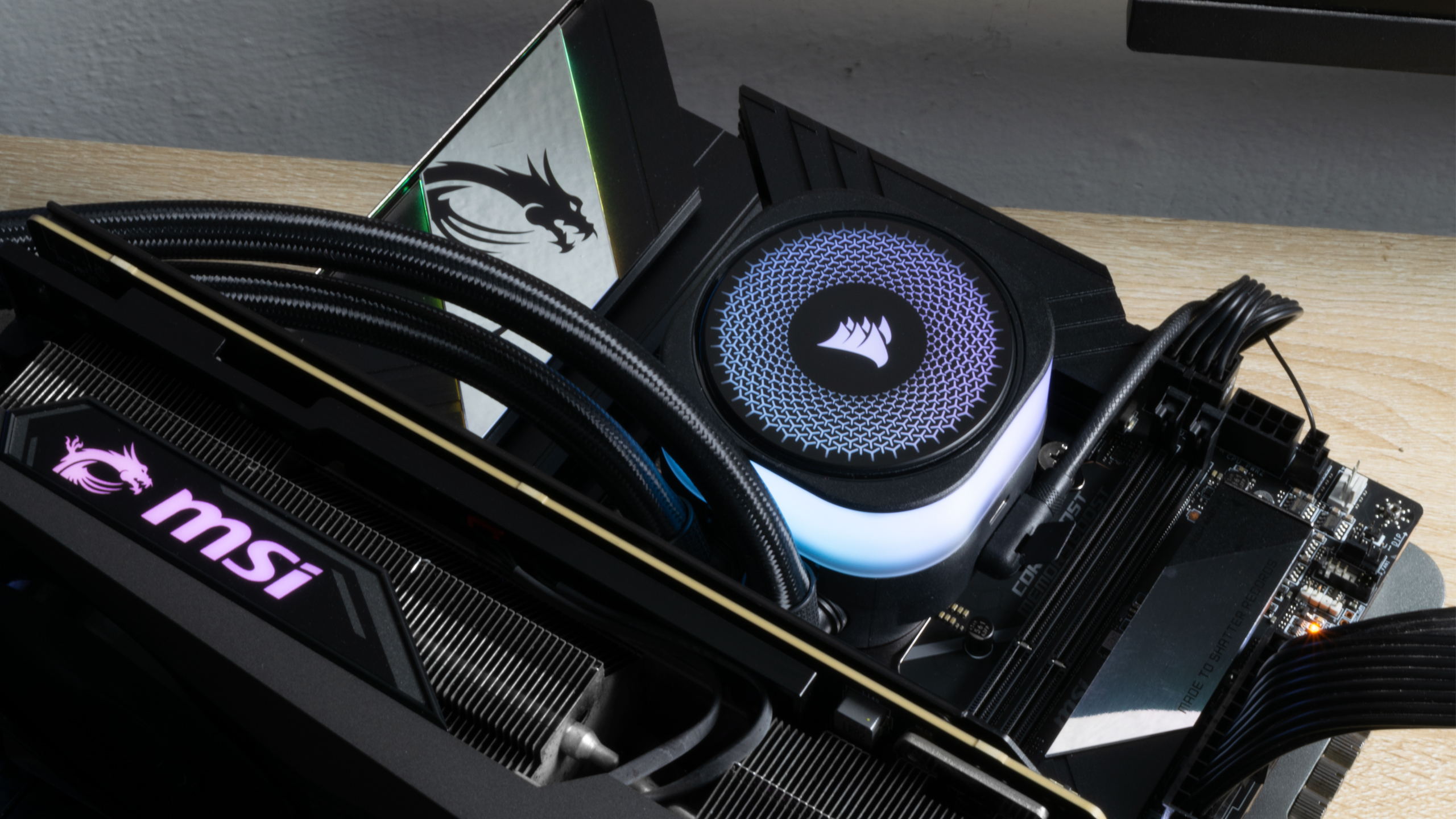
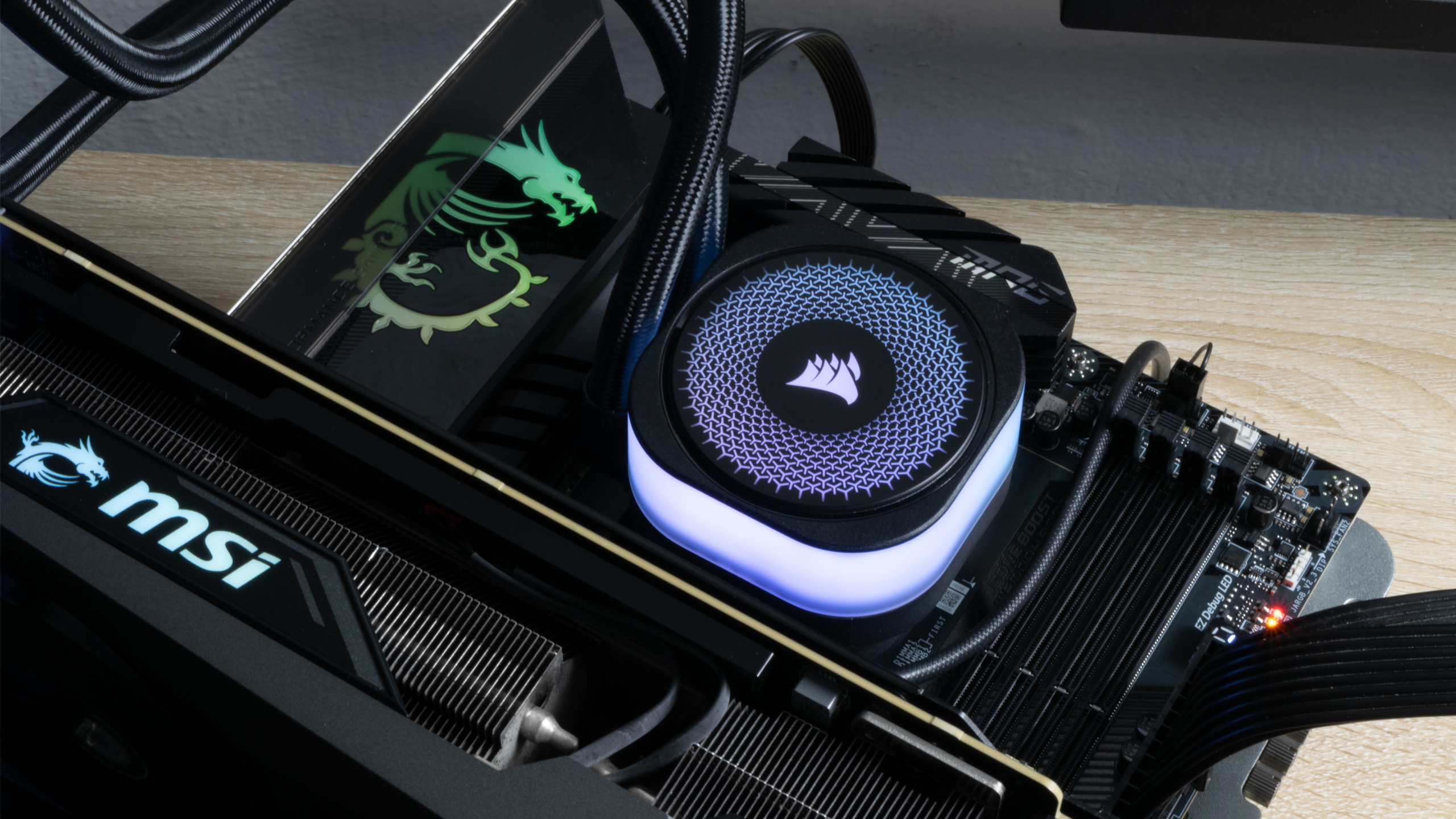
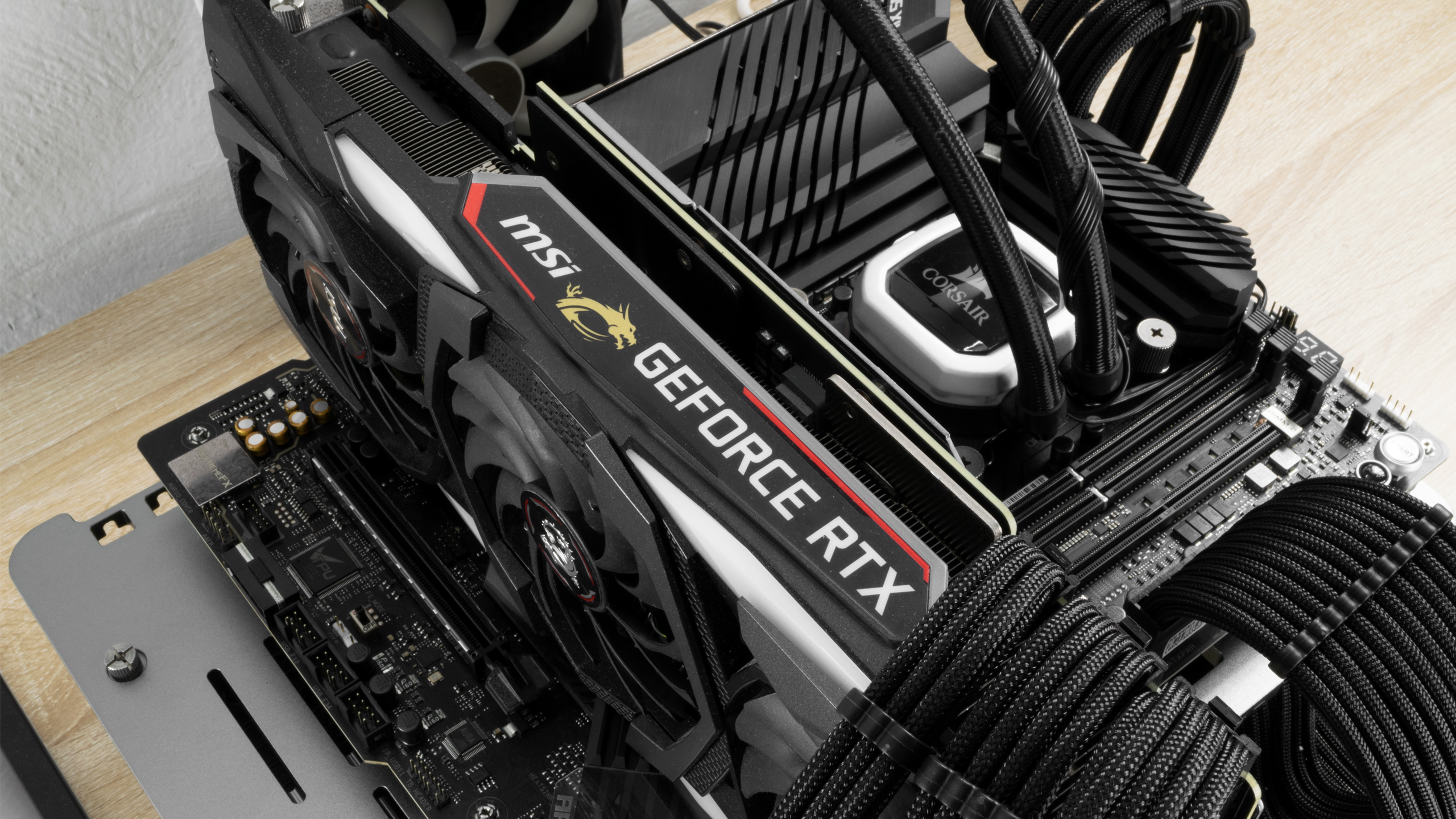
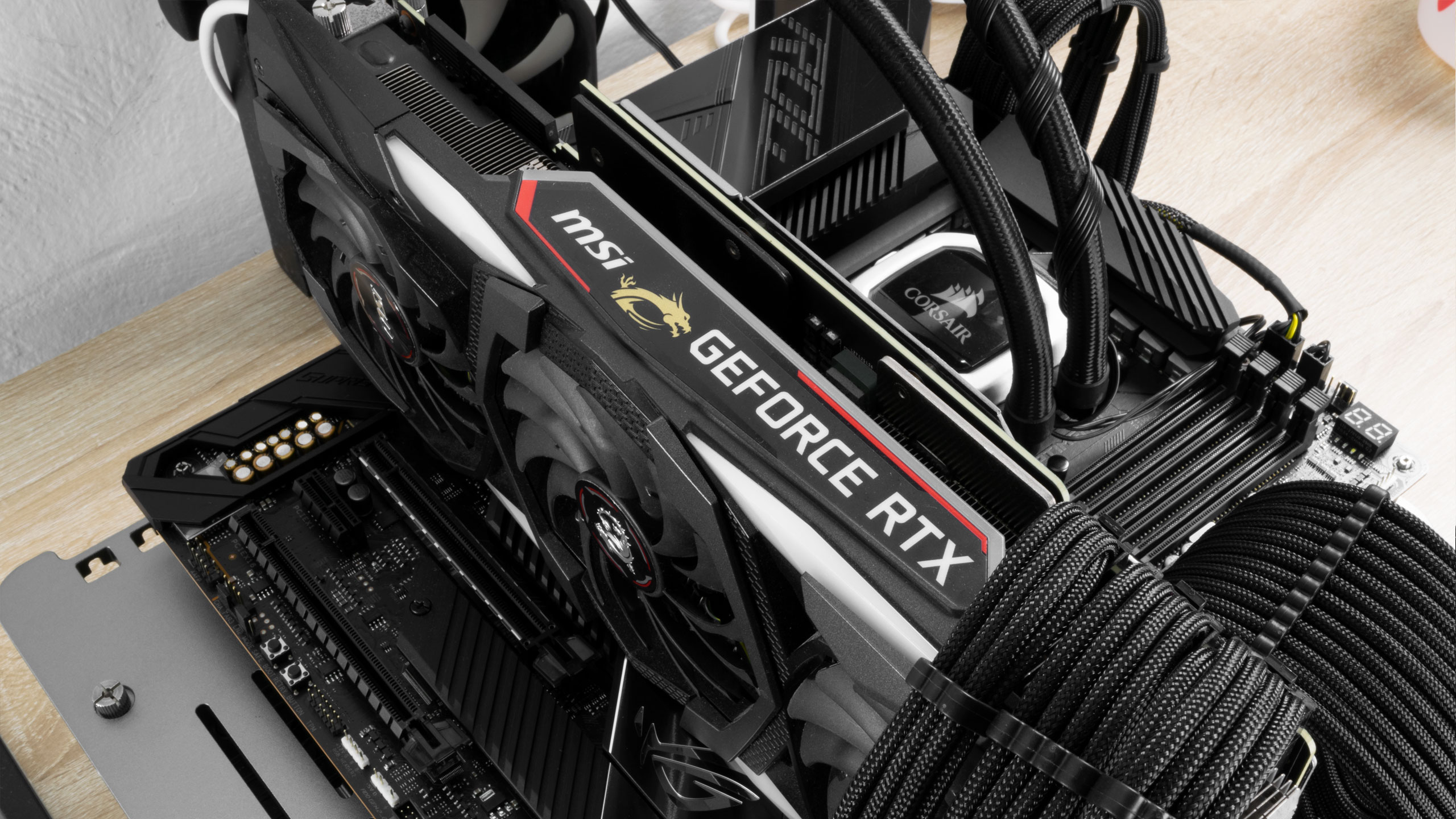
Our Intel DDR5 testbed includes the Core Ultra 9 285K (Arrow Lake) and the MSI MEG Z890 Unify-X. In contrast, the AMD DDR5 system features a Ryzen 9 9900X (Granite Ridge) and the MSI MPG X870E Carbon WiFi. The Corsair iCUE Link Titan 360 RX LCD CPU liquid cooler keeps our chips cool.
We utilize the MSI GeForce RTX 4080 16GB Gaming X Trio for our gaming benchmarks. With speeds reaching up to 7,400 MB/s, the TeamGroup A440 Lite 2TB stores our Windows 11 24H2 installation, benchmarking software, and games. A Corsair RM1000x Shift power supply delivers clean power and facilitates easy cable management for our DDR5 test platforms.
Our previous Intel DDR4 system featured the Core i9-10900K (Comet Lake) and the Asus ROG Maximus XII Apex. The AMD equivalent utilized the Ryzen 9 5900X (Vermeer) processor and the Asus ROG Crosshair VIII Dark Hero. For several years, the MSI GeForce RTX 2080 Ti Gaming Trio reliably provided us with its graphical capabilities. Crucial's MX500 500GB SSD served as our primary drive for Windows installation and benchmarking software, while the 2TB drive was dedicated to our more storage-intensive games. Meanwhile, the Corsair RM650X was selected to power our DDR4 systems.
No matter the testbed, the Streacom BC1 open-air test bench has been excellent, providing a comfortable space for all our hardware.
| Header Cell - Column 0 | Intel DDR5 System | AMD DDR5 System | Intel DDR4 System | AMD DDR4 System |
|---|---|---|---|---|
Processor | Intel Core Ultra 9 285K | AMD Ryzen 9 9900X | Intel Core i9-10900K | AMD Ryzen 9 5900X |
Motherboard | MSI MEG Z890 Unify-X / MSI MAG Z890 Tomahawk WiFi | MSI MPG X870E Carbon WiFi | Asus ROG Maximus XII Apex | Asus ROG Crosshair VIII Dark Hero |
Motherboard Firmware | 7E20v1A60 / 7E32v1A90 | 7E49v1A64 | 0901 | 3501 |
Graphics Card | MSI GeForce RTX 4080 16GB Gaming X Trio | MSI GeForce RTX 4080 16GB Gaming X Trio | MSI GeForce RTX 2080 Ti Gaming X Trio | MSI GeForce RTX 2080 Ti Gaming X Trio |
Storage | TeamGroup A440 Lite 2TB | TeamGroup A440 Lite 2TB | Crucial MX500 500GB, 2TB | Crucial MX500 500GB, 2TB |
Cooling | Corsair iCUE Link Titan 360 RX LCD | Corsair iCUE Link Titan 360 RX LCD | Corsair Hydro H115i Pro | Corsair Hydro H115i Pro |
Power Supply | Corsair RM1000x Shift | Corsair RM1000x Shift | Corsair RM650x | Corsair RM650x |
Case | Streacom BC1 | Streacom BC1 | Streacom BC1 | Streacom BC1 |
RAM Pricing Trends
DRAM pricing is expected to remain unstable throughout the current year. The fluctuation can be attributed to several factors. In response to the U.S. tariffs imposed on semiconductors, certain manufacturers, including Samsung, intend to implement a price increase ranging from 3% to 5%.
Furthermore, it has been reported that some chipmakers will reportedly discontinue the production of DDR3 and DDR4 memory chips by the end of 2025. DDR4 contract prices are expected to increase between 18% and 23%. Modern processors have transitioned to DDR5, so it makes little sense to continue manufacturing DDR4 or DDR3. The discontinuation frees manufacturing capacity, and companies can reallocate it to newer, more profitable technologies.
According to data from DRAMeXchange, the pricing of DDR5 has increased by 12%, marking a rise for the third consecutive month. In contrast, the pricing of DDR4 has remained stable for the fourth month, partially attributed to an influx of chips from Chinese chipmakers.
Whether you're shopping for a memory kit on our list of Best RAM or one that's not, you may find savings by checking out the latest Newegg promo codes, Best Buy promo codes, and Micro Center coupon codes.
MORE: CPU Benchmarks and Hierarchy 2025
MORE: GPU Benchmarks and Hierarchy 2025
Get Tom's Hardware's best news and in-depth reviews, straight to your inbox.

Zhiye Liu is a news editor, memory reviewer, and SSD tester at Tom’s Hardware. Although he loves everything that’s hardware, he has a soft spot for CPUs, GPUs, and RAM.
-
ashelus Now, let's do quad-rank instead of dual rank: -UkGu6A-6sQView: https://www.youtube.com/watch?v=-UkGu6A-6sQReply -
Olle P It's assuring to see that (for AMD) the very best is only 1.9% uplift over the basic 3,200 MHz @ 16-18-18-38. No need to spend more money there.Reply
That review has nothing to do with ranks but with number of sticks in dual channel.ashelus said:Now, let's do quad-rank instead of dual rank: ... -
cryoburner Reply
They sort of did. Today's 2x16GB kits are typically going to provide four ranks, while the 2x8GB kits will typically provide two. That's why all of the 2x16GB kits outperformed the 2x8GB kits, with the possible exception of that one DDR4-5100 kit that managed to hold it's own against a few of them in the AMD test system. But at $900, that 5100 kit is kind of nonsensical considering it was still outperformed by some 2x16GB kits of DDR4-3600 at a fraction of the price. Going with 32GB for four ranks (whether 2x16GB or 4x8GB) will tend to benefit performance more than paying a big premium for just 16GB of enthusiast-level RAM, and if one is planning to keep their system around for a number of years, the added capacity will likely provide even more benefit down the line.ashelus said:Now, let's do quad-rank instead of dual rank:
Tom's had an article pointing this out shortly after the Ryzen 3000 series launched...
https://www.tomshardware.com/reviews/amd-ryzen-3000-best-memory-timings,6310-2.html -
escksu Yes, this article basically reinforces what we already know, spending money on expensive ram doesnt make any sense, unless you have unlimited budget.Reply
Yes, someone has also pointed out that 4 ranks of ram is faster than 2. But, the gains are very small as well. You are better off using the budget for more cores or faster gpu. -
escksu Replyashelus said:Now, let's do quad-rank instead of dual rank: -UkGu6A-6sQView: https://www.youtube.com/watch?v=-UkGu6A-6sQ
Yes, we do know 4 sticks is faster. But it cost more too...so its down to your budget. If you spare budget, its fine. If you, then no. -
taz-nz Reply
The video compares 4x 8GB single rack against 2x8G single rank, 2x16gb Dual rank dimms have the same improvement as 4x8GB single rank, it's the total number of ranks (4) that matters.escksu said:Yes, we do know 4 sticks is faster. But it cost more too...so its down to your budget. If you spare budget, its fine. If you, then no.
They missed the best memory kit for 5000 series AMD cpu Gskilll 3800 CL14 32GB (2x1GB) dual rank F4-3800C14D-32GTZN-G.SKILL International Enterprise Co., Ltd. (gskill.com)Gives you the fastest stable FCLK and RAM speed at 1:1 with low latency, and timings can be tightened more on a good motherboard.
Does the new high-end RAM for Ryzen 5000 live up to its promise? - G.SKILL DDR4-3800 CL14 2x 16GB kit put through its paces | Page 3 | igor´sLAB (igorslab.de) -
Flyfisherman I read somewhere that 1.2V is generally considered the upper limit of safe SoC voltages, particularly on Ryzen 3000CPUs.Reply
SOC voltage - system on a chip voltage; responsible for the voltage related to the memory controller.
Limit: up to 1.2 V.
DRAM boot voltage - voltage at which memory training takes place at system start-up.
Limit: up to 1.45–1.50 V.
VDDP voltage - voltage for the transistor that sets memory contents.
Limit: up to 1.1 V.
1.42V will cause degradation of the CPU
1.38V should be max for 24/7 - 1.35V would be safer
Why doesn't the article mention this, that higher voltage on high speed ram causes degradation of the CPU?
All overclocking is risky business when it comes to higher than recommended voltage.
-----------------------------------------------------------------
On my Asus ROG Crosshair VIII Hero with AMD Ryzen 3950X I'm using Corsair VENGEANCE® LPX 16GB (2 x 8GB) DDR4 DRAM 3200MHz C16@1.2V (tested @1.35V 16-18-18-36) LPX=Low profile 33.5mm height so it fits under my Noctua NH-D15 SE AM4 CPU cooler.
Part. No. SKU CMK16GX4M2Z3200C16
Best regards from Sweden -
samopa Where is DDR5 section ?Reply
What is the fastest / best DDR5 Kit ?
The title suggest that this articles also cover DDR5 -
InvalidError Reply
Probably too early to tell, need more DIMMs and motherboards to actually test with.samopa said:What is the fastest / best DDR5 Kit ?